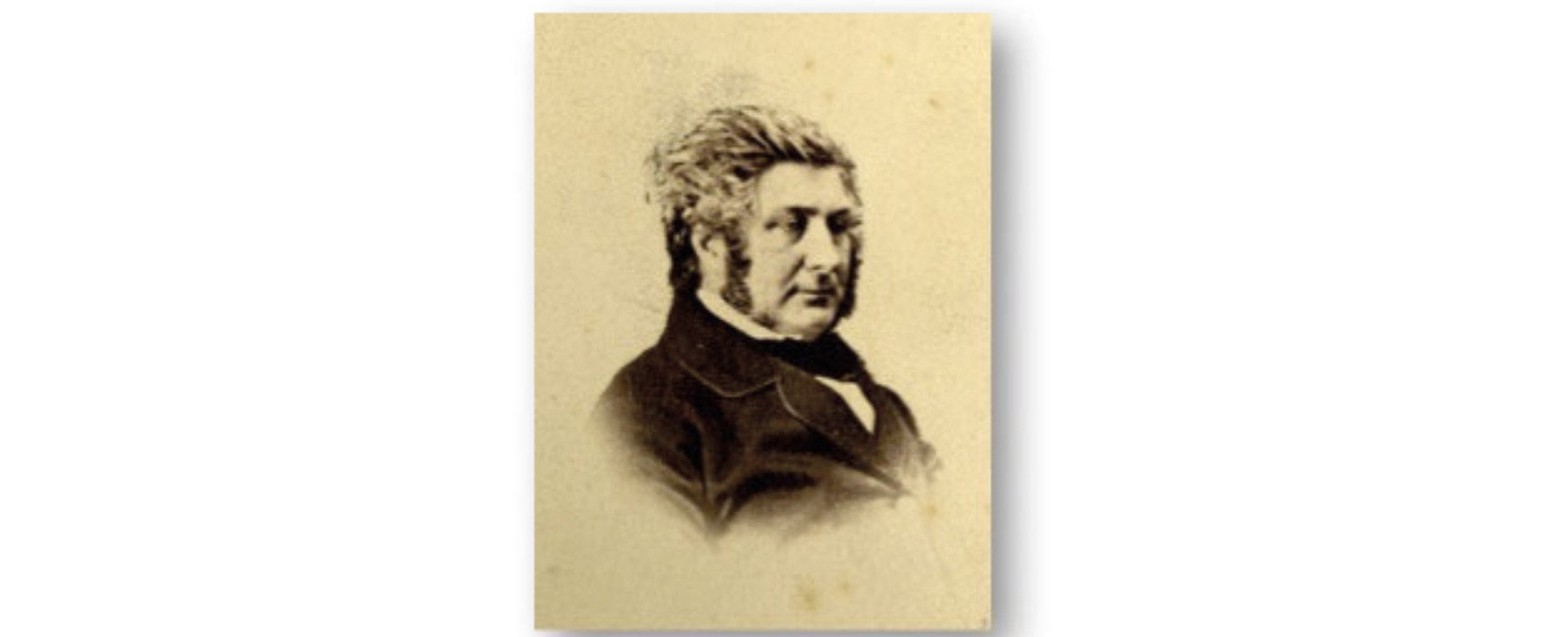Aylmer’s First Mayor, John Egan
Michael McBane
John Egan was a timber baron, the first mayor of Aylmer and a pre-Confederation Member of Parliament, who helped lay the foundations for liberal democracy in Canada. He began his life as the son of a Catholic farmer in the west of Ireland. After leaving for Canada at 20 with few resources and little education, he became a leader in the lumber industry and a well-loved Member of the Parliament of Upper and Lower Canada before dying of cholera at the age of 46 in 1857.
Egan emigrated to Canada in 1830 and settled in Aylmer in 1833. By 1840, he was a successful lumber merchant who built a magnificent stone residence, located at 161 Rue Principale in Aylmer. By 1854, John Egan & Co. (J.E. & Co.) employed 3800 men in one hundred lumber camps. No one lumberman in the days of the square timber trade ever directed an enterprise of such magnitude, and given that these operations were conducted simultaneously upon almost every stream emptying into the Ottawa River between Des Joachims and Ottawa, he was admired for the achievement. The company was of tremendous importance for the entire Ottawa Valley. As well as employing thousands directly, it was a major purchaser of farm supplies and provider of river transportation.
Egan was a man with a social conscience who never forgot his humble roots. Ottawa Valley Irish emigrants as well as French Canadians made up the bulk of J.E. & Co.’s workforce. He was good to his employees and they held him in high esteem. As well as running one of the largest square timber businesses in the Ottawa Valley, Egan became a leading political figure. He was elected mayor of Aylmer, Quebec, in 1847 and served as mayor until 1855. Between 1848 and 1857, as the elected representative of Ottawa County then Pontiac, Egan worked tirelessly to encourage government support for public infrastructure. His untimely death was a significant loss for the region, particularly for its economic development.
John Egan believed Irish emigrants came to Canada, not only for economic opportunity, but also to escape the inequality, injustice and sectarianism of life in Ireland at the time. He was determined to do his part to prevent the racial intolerance, religious bigotry and violence found in Ireland from forming the basis of Canadian society. This objective became a defining feature of his public and private life, and his most important contribution to political culture in Canada.
Egan’s anti-sectarian political principles were an essential ingredient in what would eventually lead to the successful negotiation of Canadian Confederation. Egan’s words written in 1841 have not lost their relevance for Canada today: “Ireland…has suffered long & much by designing persons, …a party spirit which has had the effect of forcing many of the peaceable & well disposed, to emigrate to another land. Do not allow such conduct here; let all national and religious differences be buried in oblivion.”
Egan’s business partnerships and friendships also overcame language divisions. He worked and was friends with many French Canadians, including Joseph Aumond, Jos. Montferrand and Louis Joseph Papineau, and was well respected in the francophone community. He also supported the efforts to secure land for the Kitigan Zibi First Nation. Egan was also a bridge-builder between the different Christian denominations.
Egan was one of Aylmer’s most prominent citizens and was a major contributor to the community’s social and economic development, including securing government funding for a new road, now Chemin d’Aylmer, linking Aylmer with the Chaudière bridge. He also facilitated the economic integration of thousands of newly arrived Irish into Canadian life. His contribution to political life would bear fruit in a future he did not live to see. In a world of election violence and fraud, Egan supported free and fair elections. Finally, he practiced a politics of inclusion that enriched Canadian political culture and contributed to the building of a liberal democracy in Canada. Citizens today can benefit from Egan’s example.






